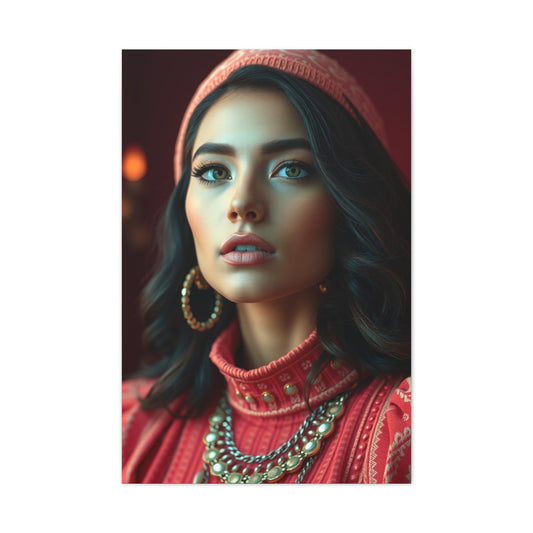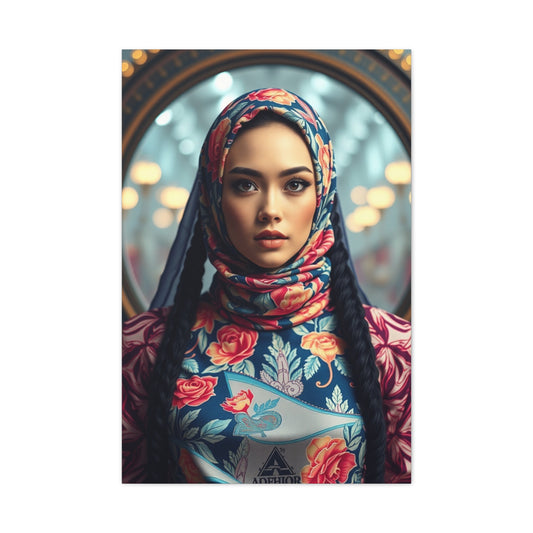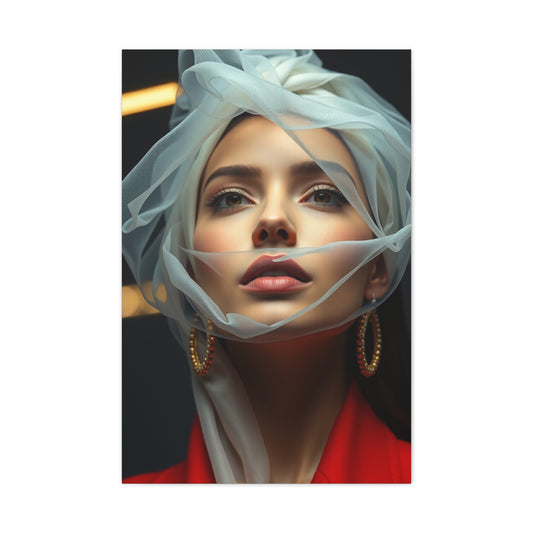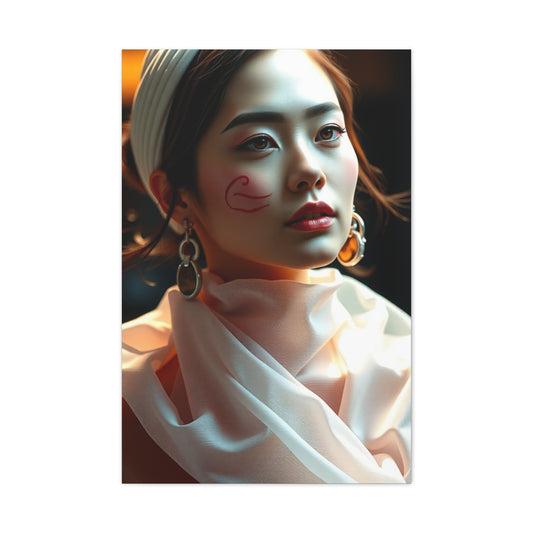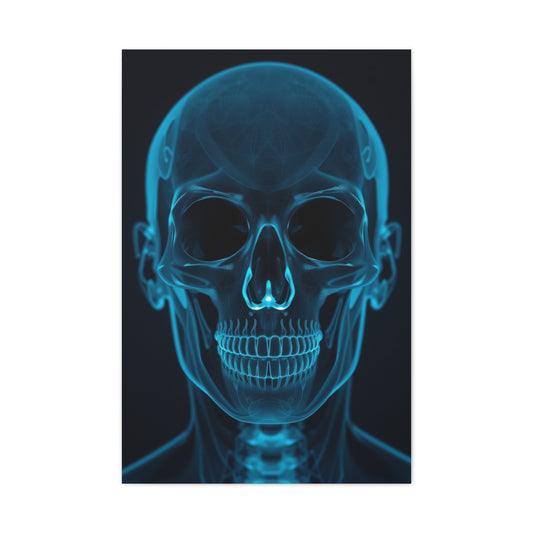The Unique Nature of Oil Sticks: Composition, Material Qualities, and Artistic Potential
Oil sticks, also known as pigment sticks or oil bars, stand at the fascinating crossroads of painting and drawing. These vibrant, solid forms of oil paint invite a more tactile, immediate interaction with the artistic surface, blending the expressive gestures of drawing with the lush chromatic depth of oil painting. Despite being underrepresented in many conversations about oil-based media, oil sticks offer remarkable flexibility and creative opportunity, deserving of a thorough look into their composition, working methods, and artistic utility.
At their core, oil sticks are made from the same foundational elements as traditional oil paintspure pigment combined with a drying oil such as linseed or safflower. What differentiates them is the small amount of natural wax included in the formulation. This wax solidifies the mixture into a bar that maintains the brilliance and opacity of the pigment while making it manageable by hand. This solid format opens the door to a form of mark-making that feels immediate, raw, and responsive. It eliminates the need for brushes during initial application and encourages artists to physically connect with their work in an unmediated way.
The wax component does not dilute the pigment’s intensity but stabilizes the structure, making the medium durable and flexible. The result is a tool capable of creating anything from delicate, whisper-thin lines to robust, impasto-like textures, depending on pressure and motion. Artists often describe this interaction as liberating, a form of visual thinking that merges precision and intuition.
The drying time of oil sticks mirrors that of traditional oil paints, relying on the oxidation process to fully cure. This trait provides artists with the luxury of extended blending and reworking time, which is crucial when developing complex surfaces or achieving seamless transitions between hues. Some oil stick products include added siccatives like cobalt or manganese compounds to speed up drying. However, others forgo these additives to maintain a slower, more organic curing time. This difference significantly affects an artist’s workflow, influencing decisions about layering, blending, and planning stages.
This extended open time also allows for greater experimentation with texture and surface manipulation. Artists can scrape, smudge, blend, and layer to build visual interest, knowing that the medium remains receptive to change over a longer period. For those accustomed to acrylics or other fast-drying materials, the pace of oil sticks might feel more contemplative, inviting a slower, more immersive approach to image-making.
Surface Preparation, Application Techniques, and Blending Innovations
The compatibility of oil sticks with various surfaces is as versatile as their traditional counterparts, though it comes with a caveat. Because the oils used in the formulation can deteriorate raw supports over time, it is essential to apply them only to properly primed surfaces. Using an acrylic gesso or oil-based primer ensures the integrity of the underlying material and supports long-term archival stability. Pre-primed panels, canvases, or boards are ideal, offering a ready-to-use base that resists the corrosive nature of oil over time.
The tactile interaction between oil stick and surface is one of its most captivating features. A gentle touch results in a translucent glaze or a sketch-like line, while firm pressure produces bold, saturated strokes that resemble brushwork. Artists can move effortlessly from detailed linework to painterly fields of color, exploring a wide spectrum of marks without switching tools.
To further enhance the fluidity of the mark, some artists dip the tip of the oil stick into linseed oil before application. This technique softens the consistency, enabling smoother, more flowing gestures reminiscent of brush painting. When combined with a colorless blending stick or traditional oil painting mediums, oil sticks can be used to glaze, scumble, or build texture with remarkable finesse. These mediums are also available in jars, making them suitable for palette knife work or larger-scale applications that require thicker, sculptural paint layers.
One of the most compelling aspects of oil stick use is the ability to hybridize drawing and painting disciplines. This is not merely a convenience’s a transformative approach that shifts how an artist perceives and executes their work. Whether used in underpaintings, layered passages, or final highlights, oil sticks contribute both form and spontaneity to the composition. Their immediacy allows for fast ideation, while their oil content supports deep, nuanced layering over time.
Additionally, oil sticks are a boon for mixed-media artists. They interact seamlessly with graphite, charcoal, and pastels, especially when used over properly sealed surfaces. Some practitioners even experiment with solvents or heat tools to further manipulate the medium, pushing the boundaries of what oil sticks can accomplish in terms of texture, transparency, and gesture.
In terms of storage, oil sticks are relatively low-maintenance. They form a skin when exposed to air, similar to how oil paint develops a film on a palette. This outer layer can easily be peeled away with a blade or rubbed off against a hard edge, revealing the soft, pigment-rich core beneath. If stored properly away from excessive heat, direct sunlight, and moisture, sticks remain viable for years. Even those that have sat unused for extended periods can often be revived with minimal effort, making them one of the more forgiving materials in the oil painter’s toolkit.
Brand Differences, Artistic Styles, and the Creative Freedom of Oil Sticks
Not all oil sticks are created equal, and understanding brand-specific differences can greatly influence an artist’s experience. Some brands prioritize a buttery consistency, making their sticks feel almost like a rich lipstick, perfect for smooth application and blending. Others produce firmer formulations, which lend themselves to precise mark-making and controlled texture. These distinctions aren’t merely about preference; they impact how the pigment sits on the surface, how it responds to pressure, and how it evolves during drying.
These variances also affect transparency and chromatic purity. A softer stick might appear more translucent, while a denser one may provide immediate opacity. For artists who rely on specific textural effects or layering methods, choosing the right consistency becomes as critical as selecting a color. It's this tactile nuancehow the medium responds in the hand and on the canvasthat elevates oil sticks beyond being just a convenient alternative to paint tubes.
The economic value of oil sticks is also noteworthy. Typically sold in larger volumes than traditional oil paint tubes and measured in milliliters, they may seem costly at first glance. However, the dense concentration of pigment and the range of expressive marks they can produce often justify the investment. Artists working on large-scale pieces or using repetitive color passages find that oil sticks offer excellent coverage and long-lasting utility.
But beyond practical considerations, what truly sets oil sticks apart is the sense of freedom they provide. They offer a way of working that encourages risk-taking, spontaneity, and direct engagement. There is something inherently liberating about removing the barrier of a brush and connecting the hand to the surface with pure pigment. This immediacy makes each gesture more intentional, each mark a declaration of presence.
For contemporary painters, oil sticks represent more than just a mediumthey symbolize a mode of making that embraces imperfection, exploration, and emotional resonance. They lend themselves to abstract work, where texture and gesture are paramount, but are equally effective in representational art, where detail and subtle transitions matter. This dual capability opens doors for artists across genres, allowing for personal expression through both control and chaos.
In a studio practice increasingly dominated by digital tools and fast-paced production, the slow, deliberate engagement of oil sticks demand can be a welcome shift. They encourage artists to work with their whole bodies, to feel the resistance of the surface, and to become intimately aware of the properties of color and form. In this way, oil sticks act not just as a material, but as a philosophical reminder that art begins with touch, movement, and the courage to make a mark.
Ultimately, oil sticks are more than a hybrid material or a technical novelty. They are a testament to the evolving language of painting, bridging centuries-old traditions with the needs and visions of contemporary creators. Whether used as the primary medium or as a complement to other materials, they invite an exploration that is as deep as it is immediate, as structured as it is free.
The Unique Composition and Materiality of Oil Pastels
Oil pastels stand apart in the realm of art materials, not just for their brilliant chromatic impact but for their singular material properties that offer an unmatched tactile experience. Unlike oil sticks, which eventually harden due to the curing of their oil content, oil pastels remain in a state of permanent softness. This is due to their composition: a precise blend of pigment, non-drying oil, and wax. The oil used does not undergo oxidation, which means it never hardens completelygranting the medium its signature pliability and ensuring artworks remain workable indefinitely.
This ever-soft texture offers a rare level of freedom, allowing artists to return to a piece days, months, or even years later with the same potential for reworking. The result is a medium that fosters spontaneity and encourages layering and manipulation without fear of cracking or drying mid-process. The wax component serves as a structural binder, stabilizing the pigment and allowing adhesion to a vast range of surfaces without priming. From smooth metal panels and rugged wood planks to raw canvas and standard drawing paper, oil pastels adhere effortlessly, allowing the artist to break out of conventional substrates and explore new textural possibilities.
Because oil pastels never fully dry, their delicate surfaces are prone to smudging and pigment transfer. Protective measures are essential, especially during transport or storage. Glassine paper, a smooth, non-stick interleaving, is often the first line of defense. It prevents pigment migration and preserves the fidelity of the surface. Fixatives, though commonly marketed as solutions, vary widely in effectiveness. Spray fixativesparticularly those based on alcohol and acrylic resinmay offer some level of sealing, but they rarely eliminate smudging altogether. Brush-on fixatives offer a bit more control and durability, yet even these cannot fully lock the surface. Artists must treat finished works with the care typically reserved for pastels or charcoals, using framing under glass and avoiding direct contact.
Despite these sensitivities, the rewards of oil pastels are profound. Their rich pigmentation, unctuous application, and potential for infinite revisions make them indispensable to artists who prioritize immediacy, surface interaction, and color fidelity. Their composition creates a balance between control and expression, offering both precision for detailed work and the freedom of broad, gestural strokes.
Expressive Techniques and Artistic Applications
Oil pastels open a world of expressive techniques that blend the tactile immediacy of drawing with painterly richness. Artists often find themselves drawn to the medium’s versatility: a single pastel stick can produce whisper-thin veils of translucent color or dense, opaque passages brimming with saturation. This range of application lends itself beautifully to a variety of artistic styles, from delicate impressionistic landscapes to bold abstract compositions.
Layering is one of oil pastels' most captivating attributes. Their soft texture allows for successive layers to be built up without the need for intermediary drying time. Colors can be blended directly on the substrate using fingers, blending stumps, or even soft cloths, creating smooth transitions or impasto-like effects depending on the desired result. The medium's ability to mix on the surface encourages intuitive experimentation, rewarding the artist with discoveries at every stroke.
When used in conjunction with other mediums, oil pastels display an adaptive versatility. Applied over watercolor or gouache, their waxy texture acts as a resist, preserving crisp lines and bold colors beneath transparent washes. Conversely, oil pastels can be applied atop dried oil or acrylic paint to add final details, highlights, or luminous accents. However, due to their oily base and delicate structure, they are not suitable as underlayers for wet medium. Attempts to paint over them often result in surface instability or unwanted chemical interactions.
One of the more painterly techniques involves the use of solvents such as turpentine or mineral spirits. When gently brushed over pastel marks, these solvents dissolve the binder, allowing the pigment to flow like watercolor or oil glazes. This effect introduces a fluid, atmospheric quality to the work, blending the immediacy of drawing with the depth of painting. These wash-like applications allow for rich layering, nuanced transitions, and intriguing textural interplay that can mimic more traditional wet mediums.
Temperature also plays an unexpected role in oil pastel handling. A slightly warmed pastel becomes creamier and more responsive, ideal for soft blending and lush applications. In contrast, chilling a pastel can make it firmer, allowing for sharper, more defined edges, often often-overlooked technique that brings another layer of control to the artist’s practice.
For artists who work in the field or favor plein air methods, oil pastels offer an ideal solution. Their compact form and lack of required preparation or drying time make them highly portable. Unlike liquid paints that require solvents and cleanup materials, oil pastels are self-contained. This makes them an excellent choice for spontaneous studies, location sketches, or intuitive visual journaling, where speed and directness are key.
Artistic Value, Practical Use, and Lasting Appeal
Beyond technique and material structure, oil pastels hold a special place in the creative toolkit because of their balance between accessibility and expressive power. Economically, they represent an inviting entry point for artists of all levels. Compared to oil sticks or other professional-grade painting tools, oil pastels are more affordable, especially when purchased in sets that offer a wide range of hues. Even small or student-grade sets can deliver a surprising level of vibrancy, allowing emerging artists to explore color theory and composition without major financial investment.
Yet, affordability does not equate to lesser quality. Professional-grade oil pastels contain a high pigment load, ensuring that even a light touch yields rich, lasting color. Their small size, while encouraging experimentation and portability, does mean that they tend to wear down quickly, especially under heavy use. This calls for frequent replacement, but many artists find the cost justified by the level of control and intensity the medium offers.
Set configurations range from general all-purpose assortments to highly curated selections tailored to specific themes such as landscape, portraiture, or architectural sketching. These curated palettes often help artists streamline their process and develop a consistent visual language within their chosen subject matter. Additionally, many brands offer individual stick purchases, allowing artists to fine-tune their color selection over time and build a personalized collection aligned with their evolving style.
Preservation remains a crucial aspect of working with oil pastels. While the medium itself does not deteriorate under normal conditions, the exposed nature of the pigment film requires thoughtful display. Framing under glass with a slight space between the surface and the glassoften achieved using a mat or spaceris the most effective method for maintaining artwork integrity. This prevents smudging, dust accumulation, and accidental abrasion.
Ultimately, the charm of oil pastels lies in their resistance to finality. They challenge traditional notions of when an artwork is complete, inviting the artist to return, adjust, and reimagine. This open-ended quality fosters a creative relationship that is both intuitive and enduring. Every gesture feels immediate, every touch of color personal. Their texture, reworkability, and intensity transform them from mere materials into collaborative partners in the act of creation.
The vivid glide of oil pastels across paper or canvas is more than a mark-making event is a sensorial dialogue between mind, hand, and medium. Artists who embrace this fluidity often discover not only new ways to visualize but also new rhythms of working. Whether used in standalone drawings, mixed-media explorations, or as companions to other materials, oil pastels bring a luminous, expressive presence that continues to captivate and inspire.
The Dynamic Interplay of Oil Sticks and Oil Pastels in Mixed-Media Art
In contemporary mixed-media practice, artists continually explore how different materials can coexist, contrast, and converge to unlock new dimensions of expression. Among the most compelling pairings in this landscape is the use of oil sticks and oil pastels. These two mediums, often misunderstood as incompatible due to their differing characteristics, in fact offer a powerful dialogue when used together. Their fusion invites tactile discovery, visual surprise, and technical innovation, resulting in works that pulse with texture, color depth, and dynamic energy.
Oil sticks, or oil bars, are essentially oil paint in solid form, composed of pigment, oil, and wax. As they dry through oxidation, they develop a skin similar to traditional oil paint and eventually cure into a stable, archival layer. Oil pastels, by contrast, are a blend of pigment and non-drying wax or oil, remaining soft, pliable, and constantly reworkable. This fundamental divergence in behavior medium setting permanently while the other remains ever malleable creates both tension and opportunity on the surface of a work.
When artists bring oil sticks and oil pastels together, the outcome depends heavily on the sequencing, layering approach, and surface preparation. Understanding how each behaves independently is crucial to orchestrating their interaction. Rather than pitting them against one another, a thoughtful artist sees them as distinct voices wiwith theirempo, pressure, and permanence that can be layered and counterposed to create rich compositional symphonies.
One of the most intuitive ways to begin such mixed-media work is to use oil pastels for initial layers. Their ease of application and ability to cover large areas with little resistance make them perfect for sketching compositions or establishing tonal underpaintings. Oil pastels also adhere beautifully to a variety of surfaces, from rough-textured paper to primed canvas, making them an accessible first layer. Their waxy softness allows for vibrant blending, inviting spontaneous gesture and mark-making.
However, this spontaneity comes with limitations when planning to introduce oil sticks later. Because oil pastels never fully dry, applying a hardening material like oil stick on top can create inconsistencies. Over thick or impure pastel layers, the drying oil stick may struggle to cure evenly, potentially leading to surface cracking or adhesion issues. To avoid this, many artists choose to invert the sequence, starting instead with oil stick applications and allowing them to partially or fully dry before adding oil pastels.
This alternative sequence opens new creative avenues. When applied first, oil sticks create a luminous and stable base, establishing weight and structure. Once these marks are sufficiently set, oil pastels can be layered on top, lending softness, detail, or chromatic subtlety. Their mutable nature adds contrast visually and materially to the firmer, cured strokes of oil sticks. This arrangement is particularly effective in expressive works that seek to capture both gestural immediacy and structural permanence.
Exploring Layering, Textures, and Transitions in Multi-Media Expression
A defining feature of combining oil sticks with oil pastels lies in the tactile and visual contrasts they offer. Artists who embrace these differences often treat their surfaces like evolving terrains, where each medium contributes its unique properties to the unfolding visual topography. When oil sticks are used on textured grounds such as gessoed canvas, handmade papers, or mixed-media panelstheir buttery consistency adheres well, forming a reliable base layer. After drying, these strokes can be accented with oil pastels to create vivid highlights, nuanced color inflections, or delicate lines.
Adding oil pastels over dried oil stick marks introduces a dimensional interplay that invites viewers to not only see the work but also sense its tactile essence. The waxy sheen of the pastel captures light differently than the matte finish of a cured oil stick mark, creating areas of subtle shimmer and contrast. These differences in reflectivity and density can be modulated with varying pressure, from scumbled pastel overlays to sharp incised lines, crafting a rhythm across the surface that mimics musical composition, striking a note, each color a tone.
Beyond direct application, solvents expand the ways these materials interact. When applied judiciously, turpentine or mineral spirits can dissolve oil pastels into soft washes, lending an atmospheric, watercolor-like quality to the piece. Similarly, oil sticks can be partially melted using heat tools or thinned with linseed oil to create fluid gestures that bleed into surrounding elements. These techniques open the door to seamless transitions between media, turning abrupt contrasts into fluid conversations.
While much of this interplay relies on harmony, contrast itself is a powerful compositional strategy. One striking approach is to place a smooth, polished layer of oil pastel against a bold, impasto oil stick form. The juxtaposition of softness and mass, gloss and matte, invites tactile engagement and deepens the viewer’s experience of the work. Rather than blending seamlessly, these elements assert their material individuality, creating a visual counterpoint that enhances the expressive range of the composition.
This intentional contrast also serves thematic or emotional purposes. In abstract works, the relationship between a scumbled pastel haze and a decisive oil stick stroke might convey ambiguity versus certainty, or emotion versus logic. In representational art, oil sticks can build mass and volume in architectural or anatomical forms, while oil pastels infuse them with psychological undertones through delicate color variations or fragmented highlights.
Practical Considerations: Supports, Techniques, and Preservation of Hybrid Media Works
While the creative potential of combining oil sticks and oil pastels is immense, successful execution depends heavily on the choice of supports and awareness of preservation needs. Mixed-media demands thoughtful groundworkliterally. Artists often turn to primed canvases or rigid panels for durability, particularly when working with oil sticks, which require surfaces that can accommodate curing without risk of warping or deterioration. Universal or oil-compatible primers offer an ideal foundation, ensuring that both oil-based and wax-based media adhere properly.
Paper remains a popular choice as well, especially textured varieties with enough tooth to grip the pastel without slipping. For oil stick use on paper, it is advisable to use a heavy, primed surface to avoid bleed-through and maintain structural integrity. Some artists prepare their grounds using acrylic gesso or custom textural layers, incorporating resist materials, sanded surfaces, or collaged elements to further expand the surface vocabulary. This preparatory process can itself become part of the creative act, embedding intention into every layer.
Preservation becomes a crucial consideration in finished pieces that combine these materials. Because oil pastels never fully dry and remain sensitive to smudging, protection is essential. Many artists choose to frame such works under glass, using spacers to ensure the artwork does not come into contact with the glazing. Others may use fixatives, though this route demands caution. Some fixatives can dull color, alter texture, or interact negatively with oil content, so thorough testing is essential before applying to final work.
A common practice involves applying a light, even layer of fixative over oil pastel passages only after the oil stick layers have completely cured. Following this with a glassine sheet during storage or transport adds a layer of defense. Some artists also experiment with cold wax as a protective barrier, though its compatibility with oil pastels is variable and should be approached experimentally rather than systematically.
In the end, the use of oil sticks and oil pastels together is not merely a technical evolution, expressive evolution of the medium that brings a distinct energy and material history. Oil sticks reach back into the legacy of oil painting with their gravitas and density, while oil pastels echo the immediacy and intimacy of drawing. Their union fosters a space where line meets mass, gesture meets permanence, and spontaneity coexists with structure.
In abstract compositions, this synergy heightens emotional resonance through richly textured surfaces and dynamic movement. In figurative contexts, it allows for nuanced articulations of form, shadow, and atmosphere. Across styles, this dual-medium approach deepens the visual language of the work, enabling artists to express complexity and contradiction with elegance.
The path of blending oil sticks and oil pastels is not without its challenges, but those who engage with it earn access to a versatile and rewarding material vocabulary. It is a space where innovation is born from understanding, where contrast becomes cohesion, and where every mark carries both weight and whisper. As contemporary artists continue to push the boundaries of medium and method, the intersection of oil sticks and oil pastels remains a rich and ever-expanding terrain for exploration.
Exploring the Essence: Oil Sticks and Oil Pastels as Distinct Artistic Realms
In the diverse landscape of art materials, oil sticks and oil pastels each stake out their territory, offering creators powerful yet distinctly different avenues for expression. These media, while often compared due to their shared tactile application, actually embody contrasting artistic philosophies. As we examine their respective strengths, it becomes clear that the choice between them is not just technical’s deeply personal.
Oil sticks present themselves as instruments of substance and durability. Crafted from pure pigment blended with drying oils such as linseed or safflower and just enough wax to hold form, they carry the DNA of traditional oil painting. Their ability to dry and cure over time through oxidation places them firmly in the lineage of classical painting, offering both gravitas and sophistication. Each stroke is imbued with permanence, building surfaces that are not only visually compelling but physically resilient. The marks made with oil sticks do more than reside on the surfacethey merge with it, forming an integral part of the substrate’s fabric.
Conversely, oil pastels are rooted in fluidity and immediate tactile experience. Their formulation, comprising non-drying mineral oil and a wax binder, never hardens, allowing continuous reworking and responsiveness to every gesture. This impermanence, while a challenge for conservation, grants unmatched immediacy. Artists can layer, blend, and revisit passages indefinitely without waiting for drying stages or surface preparation. This quality makes oil pastels a natural fit for sketching, spontaneous expression, and exploratory mixed-media work. Whether in a studio or on location, the readiness of oil pastels to perform on virtually any surfaceincluding unprimed paper, wood, or metalprovides immense creative freedom.
In terms of user accessibility, oil pastels are often the first choice for beginners or artists looking to experiment with color. Their relatively low cost and compact size make them approachable, enabling quick experimentation with a wide range of hues. However, their creamy texture and high pigment load mean they are consumed rapidly, leading to faster depletion compared to oil sticks. Oil sticks, while more expensive initially, yield greater longevity per unit. Their dense pigment-to-wax ratio and ability to cover large areas make them a sustainable investment for artists committed to building layered, archival-quality work.
Ultimately, these two media represent more than toolsthey symbolize divergent yet complementary energies. Where oil sticks evoke depth, structure, and a journey toward finality, oil pastels celebrate motion, lightness, and the beauty of the ephemeral. Choosing between them becomes not just a matter of practicality but an alignment with the kind of artistic experience one seeks to inhabit.
Technical Aspects, Material Compatibility, and the Question of Permanence
When considering technical execution, surface compatibility, and long-term preservation, the differences between oil sticks and oil pastels become even more pronounced. Understanding these characteristics is crucial for any artist aiming to select the right medium not just for expression, but also for longevity and integration into broader practice.
Oil sticks are closer to traditional oil paints in their chemical makeup, which means they interact with surfaces and materials in similar ways. Their drying oils necessitate a primed surface to prevent damage to the substrate. Applying oil sticks directly to raw canvas or paper can lead to deterioration over time as the oil seeps in. This requires artists to prepare surfaces using acrylic gesso, oil primer, or a similarly effective sealant. Once dry, oil stick marks can be overpainted, varnished, or extended with traditional oil mediums. They also accept blending with other oil-based materials, enabling rich layering, glazing, and integration with conventional brushwork. This makes oil sticks an ideal choice for artists already familiar with or transitioning from oil painting, as the skill set and materials often overlap.
On the other hand, oil pastels demand far less in the way of preparation. Their waxy base ensures they adhere to almost any surface, including rough paper, wood panels, and even non-porous materials like plastic or metal. They are also more forgiving in casual or experimental contexts, as they do not require sealing or curing. However, this very trait becomes a double-edged sword when considering longevity. Oil pastels never fully dry, meaning they always retain the potential to smudge or shift. Protective framing with glass or covering with glassine sheets is often necessary for storage or display. While fixatives are available, their effectiveness is inconsistent, and they may subtly alter the finish or color vibrancy.
For mixed-media artists, oil sticks offer more seamless blending with other oil-compatible media, including cold wax, oil paint, and varnishes. They support building complex layers that harden over time, making them appropriate for more permanent installations or works intended to last generations. In contrast, oil pastels excel when used in combination with dry or water-based materials for contrast and texture. Their resistance to wet media can even be employed deliberately, allowing for resist techniques when layered with inks or watercolors.
Archival considerations are central in the choice between these two. While oil stick artworks often require up to six months to cure fully before varnishing, once cured, they provide a hard, durable finish. Their long-term stability is well-suited for collectors, galleries, and serious studio practice. Oil pastels, due to their perpetual softness, must be handled delicately throughout their lifetime. Their brilliance and immediacy come at the cost of preservation, requiring thoughtful framing and handling practices to maintain integrity over time.
Each medium’s physical characteristics speak volumes about the kind of commitment and interaction an artist must bring to the table. Oil sticks require preparation, patience, and a readiness to engage with time and transformation. Oil pastels reward spontaneity, accessibility, and an openness to impermanence.
Expression, Emotion, and Artistic Identity: Finding Your Medium's Voice
At the heart of any artistic decision lies the pursuit of expressive truth. How a medium behavesits texture, resistance, vibrancy, and versatilityultimately influences the stories it can help tell. Oil sticks and oil pastels, while closely related in form, differ greatly in the kind of marks they make and the emotional weight they can carry.
Oil sticks are inherently dramatic. Their density, their resistance to the hand, and their evolving surface quality all contribute to a deeply physical painting experience. The artist can dig into the surface, creating rich impasto textures or delicate translucent glazes depending on pressure and layering. These tools are designed for gestures that leave an impact, for surfaces that echo the body’s movement over time. Whether used to construct large, bold compositions or to refine smaller, emotionally charged details, oil sticks lend themselves to work that unfolds and deepens across layers.
Oil pastels speak to a different kind of engagement that emphasizes finesse, subtle modulation, and an almost dreamlike flexibility. The marks they produce can shift from smoky gradients to densely pigmented accents, always with the option to revise, rework, or soften. Their responsiveness to touch fosters a more intimate dialogue between the artist and the image, enabling a fluid back-and-forth that is harder to achieve with slower-drying media. This makes them ideal for capturing fleeting impressions, delicate atmospheres, or evolving narratives that resist closure.
When used together, oil sticks and oil pastels can produce a hybrid language that taps into both structure and spontaneity. Oil sticks can anchor a composition with permanence and depth, while oil pastels introduce layers of movement and energy. In conceptual or abstract work, this contrast can speak volumesabout memory and transformation, presence and absence, stillness and motion. The juxtaposition of curing and non-curing mediums within a single piece creates not just a visual effect, but a philosophical one, reflecting the tensions and harmonies of lived experience.
Artists who gravitate toward slow-building, layered workwhere each mark contributes to a long-term visionmay find oil sticks to be the more fulfilling medium. Their ability to integrate with painting traditions and support long drying times gives them a sense of gravity and evolution. In contrast, those who thrive on immediacy, gesture, and emotional instinct may find oil pastels a natural fit. Their malleability and vibrancy encourage unfiltered expression, allowing for a closer link between thought and surface.
In the end, the decision to use oil sticks, oil pastels, or a combination of both should emerge not from trends or convenience, but from a deep listening to one’s creative impulses. Each tool offers a way of seeing, feeling, and shaping the world. To embrace oil sticks is to embrace complexity, duration, and the potential for transformation. To embrace oil pastels is to surrender to immediacy, play, and the poetry of change. To use both is to create a rich dialogue between opposites, uniting solidity with softness, clarity with ambiguity, and permanence with possibility.
Through this ongoing exploration, the artist discovers more than just techniquethey discover voice, vision, and the medium through which their truest work can unfold.











